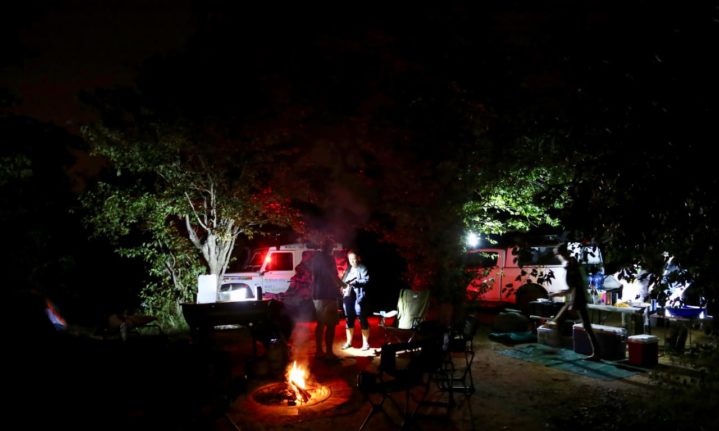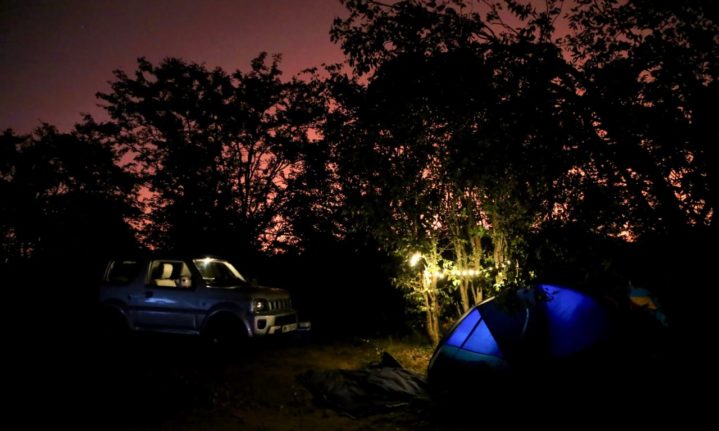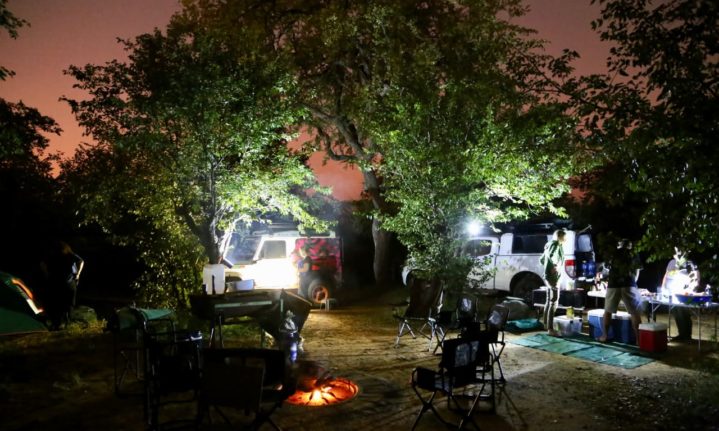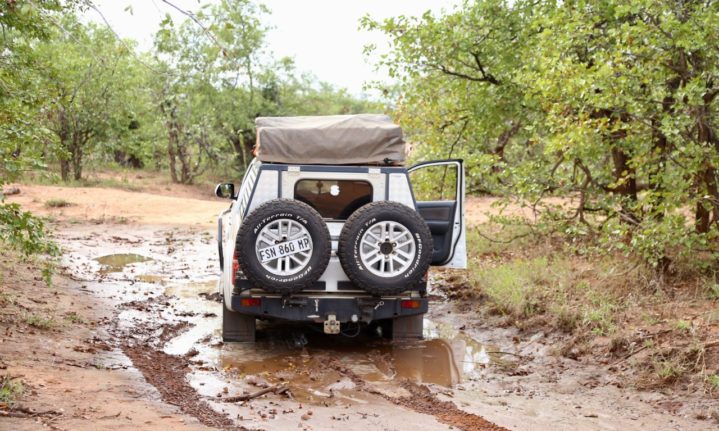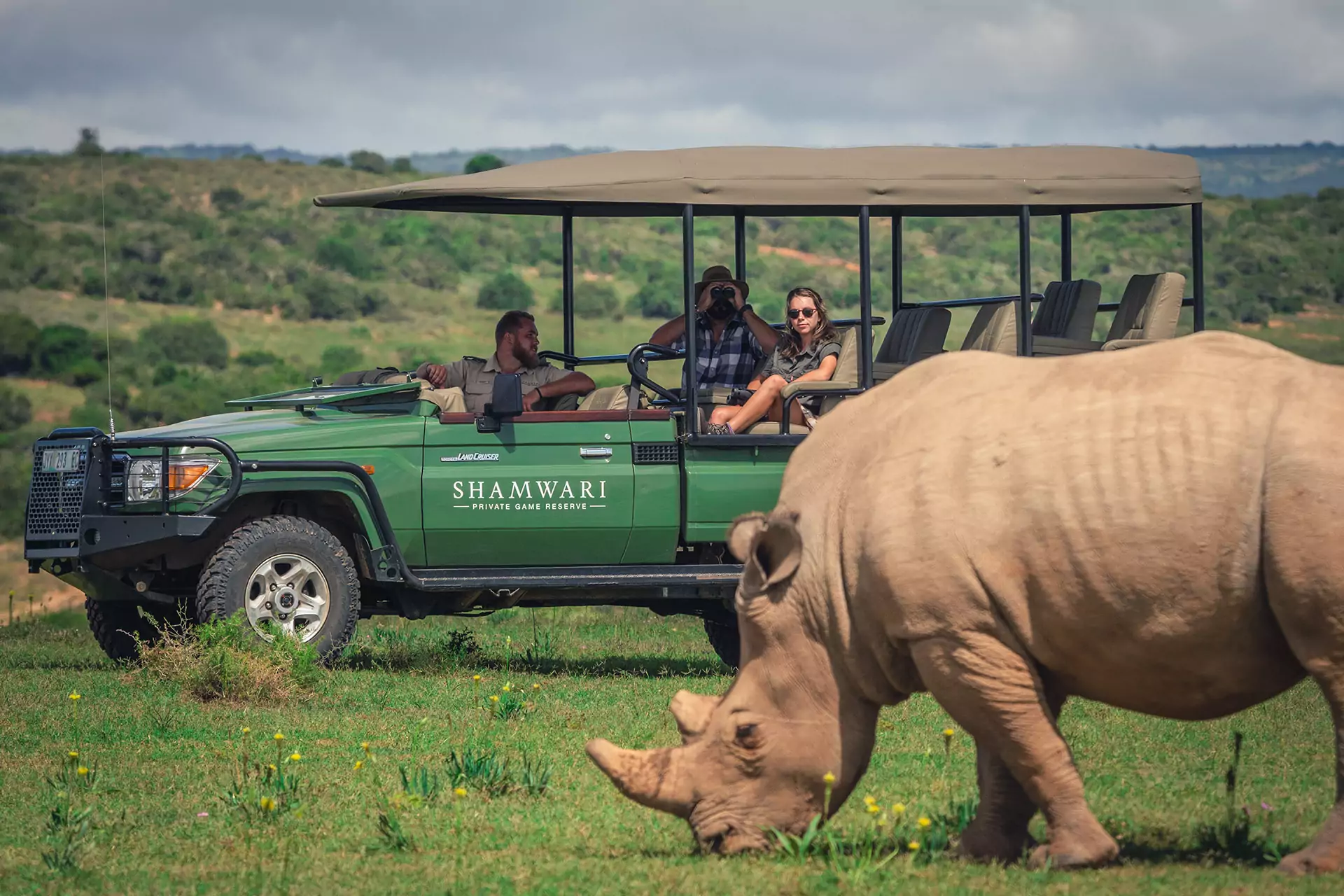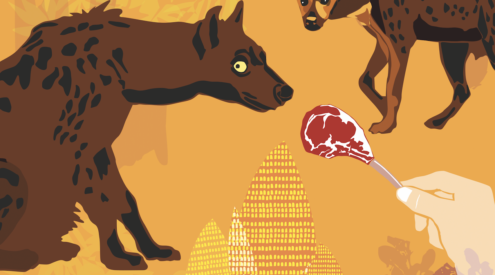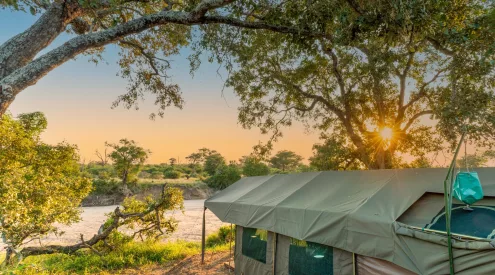The Mafunyane 4×4 Eco-Trail is a four-day, three-night guided adventure trail along the north western section of Kruger National Park between Phalaborwa gate and Punda Maria.
The trail covers a distance of approximately 290km, with all participants driving their own 4×4 vehicles, including all provisions for the four-day trip: camping gear, own water, firewood and food. A knowledgeable and professional SANParks guide leads the trail, providing all the route info and bush intel along the way.

We departed Phalaborwa gate on a Thursday afternoon (the trail typically runs Thursday to Sunday) in the capable hands of SANParks guide Vanessa Strijdom. With 26 years of experience as a Kruger guide, it was a pleasure to be led by Vanessa.
The road conditions after unseasonably late rain varied from reasonably good to sections with steep, badly eroded inclines, crossing of streams and rivers and slippery muddy sections. All vehicles handle this differently, and my short-wheel base Suzuki Jimny did well, while some of the bigger, higher clearance vehicles battled through the steep dongas.
Each of the overnight campsites has a fireplace, enviro-friendly toilets and space for a shower to be strung up, with water heated over the fire.
Below is a list of things to pack, some of which I did, some of which I didn’t (and realised why I should have).
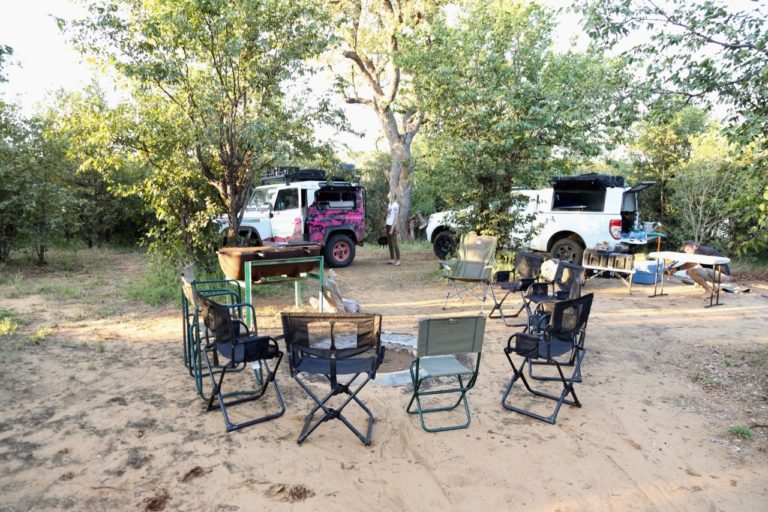
Fuel
From reading the itinerary, I knew we were due to cover 290km, and figured bringing extra fuel would be an inconvenience. I totally underestimated how much driving in low range affects fuel consumption, and I didn’t take into account the fact that there would be a chance we would have to take some major detours. Rivers in flood and impassable sections of road meant we had to take the long way around on some days, and as the odometer racked up those extra kilometres and my fuel diminished, I wished that I had packed some extra fuel. That said, I have a relatively small petrol tank at 40l, so bigger cars with reserve tanks should be fine. In general though, it’s good 4×4 practice to have extra fuel on hand. Thankfully, there is an opportunity to refuel on the third day at Punda Maria and I made it just in time!
Groundsheet
I forgot to pack a ground sheet and it was the item I wished for the most, after fuel. As is the case on any multi-day 4×4 trip, you pack up and move every day. This means a lot of packing and unpacking the car, and there is nothing worse than having to unpack items in your boot onto wet sand.
Tow rope/ winch
Have a tow rope and a backup tow rope in case, as happened to us, one of the ropes snap. We were saved by the fact that the Ford Ranger in the group was fitted with a winch, and we were able to extract vehicles from tricky situations that way. On this point, it’s advisable to have all standard 4×4 gear, including a compressor and tyre repair kit.
Wet wipes
After a long day of dusty driving, a wet wipe goes a long way in cleaning up the car interior, and yourself. Putting up and taking down a tent twice a day can be grubby business and with no taps available it’s the easiest way to clean things. Driving with the windows open, everything got coated in a fine layer of dust, including radios, sunglasses, the steering wheel and gear levers, but a quick once over with a wet wipe in the morning gave me a fresh start every morning.
Portable gas cooker
It’s true, there’s nothing like cooking over an open flame but when you’re pinched for time, a gas cooker can be a life saver. Mine came in handy for quick morning coffee and heating up water to wash with when waiting for a fire to start would have taken too long.
Added to this, I would pack a car fridge or cooler box filled with dry ice to keep things cool. Even though this trip runs throughout the winter months, ice doesn’t stand much of a chance in a car for two days (on day three, there is opportunity to restock at Punda Maria rest camp.)
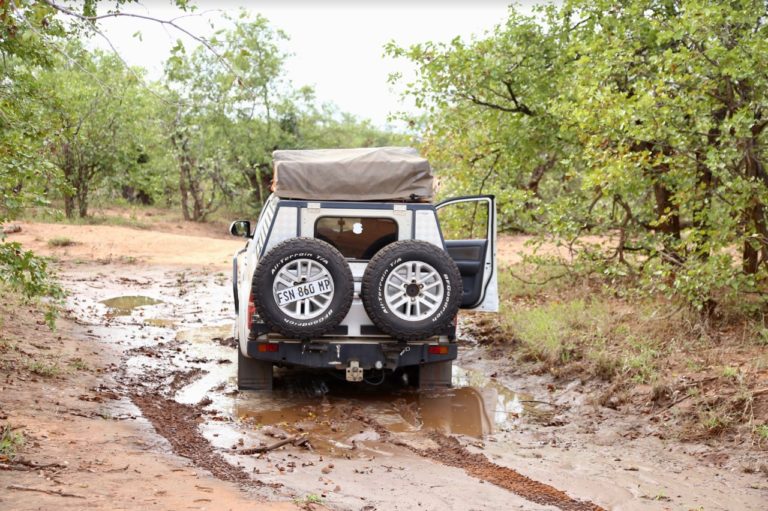
Top packing tips
Pack things tightly, or strap them down if possible. I mistakenly tried to prioritise access, and while I could reach everything I needed, everything bounced around in the back on the bumpy 4×4 track.
Try to pack things that you’ll need together. For example, keep your coffee, gas cooker, coffee press and mug in one box as opposed to splitting it between a food box and a cooking equipment box. It saves you the hassle of having to locate and unpack multiple items in search of only a few small things.
General packing list
-Kruger map (This won’t help for directions, as Kruger’s 4×4 routes are not on the map, but it is helpful for information on the region’s vegetation and mammals.)
-Binoculars
-Tree/bird ID books
-Tyre weld/ puncture repair kit
-Tyre pressure gauge and compressor
-Wet wipes (for body and car!)
-Container/ bucket to wash dishes in
-Something to pack a wet tent into, even a plastic bin bag works
-Rope
-Groundsheet
-Car fridge
-Folding/camp chair
-Hat, sunglasses, suncream
-Lug boxes, labelled (coffee stuff together)
-Gas cooker and kettle
-Firewood/ charcoal/ lighters
-Quick-dry towel
-Headlamp/light
ALSO READ









